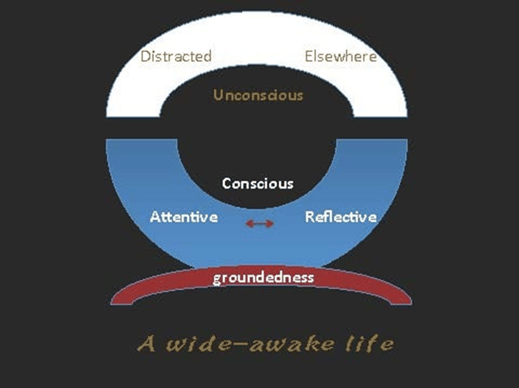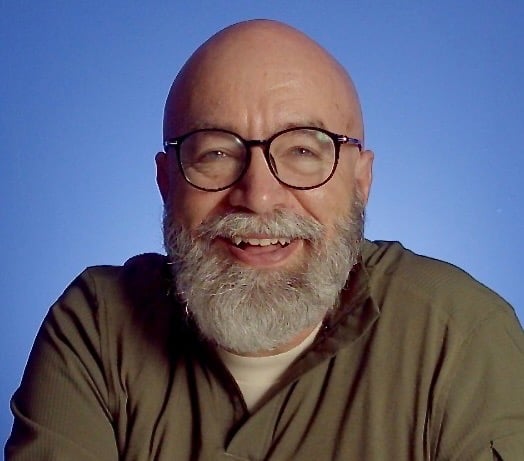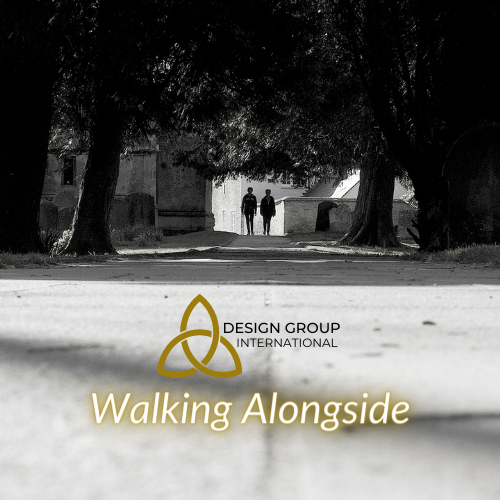Living a Wide-Awake Life
I
How people process information—how they perceive it and then how they respond to it by using it or not—is fascinating to me. This subject continues to be considered across many disciplines, and most especially among those responsible to teach and train adults in workplace and school. Hopefully, for all of us, our perception and use of information serves the purpose of our learning and our ultimate growth toward wisdom.
.jpg?width=1920&height=1080&name=Learning%20toward%20Wisdom%20is%20one%20of%20the%20core%20competencies%20of%20Process%20Consulting%20as%20defined%20by%20the%20Society%20for%20Process%20Consulting.%20Here%20is%20how%20the%20competency%20is%20described%20Client%20learning%20that%20lasts%20is%20(2).jpg)
For now, however, let’s focus on just the difference between external and internal. A person who thinks externally needs to process with other people or at least through some form of self-expression. Once their thoughts are expressed, they can edit, refine and focus—often based on the responses of others. In other words, what they first say, or perhaps the first ten things they say, are not necessarily their idea. It is a notion they need to process in order to find out what they think. Such persons are often very intuitive.
A person who thinks internally needs to process alone, and with time and quiet. Once they are in touch and have opportunity to edit, refine and focus until they are satisfied that their idea is ready and worthwhile, they can express themselves. They need quiet in order to formulate an idea, and what they say does not find its way into expression until they have examined and perhaps discarded a number of responses. They must reflect before they can find expression.
So…you can imagine the misunderstanding that can arise between friends, neighbors, siblings, spouses, working teams, parents/children and communities of volunteers based on this single dynamic. Some wish others would be more forthcoming while others are wishing that some people would sit down and be quiet.
Don’t forget this gets even more complex when you take into account that folks are processing out loud or quietly based on a key learning channel—what they hear, what they see or what they physically experience. And more complex still, because they are also likely to use a second input when the first isn’t working. That means a person who processes externally through visual means (visual-external) might shift to kinesthetic-internal if they need to process further. Or, perhaps their second approach is an extension and more intense version of the first means of gaining input. There are so many ways we can misunderstand one another—right at the beginning of how we process information!
We can turn that last setnence around. There are so many ways to examine a matter and gain a full perspective—right at the beginning of how we process information! We spend a certain amount of time working our way through a matter. Either through additional conversations where we clarify painful and preventable misunderstanding or by taking the needed time at the beginning to build an aligned understanding.
We help ourselves by increasing our awareness of how we process information, and then more conscious of how those with whom we must relate do their processing. We can be conscious of our own style and make allowances for the styles of others—becoming more well-rounded as we respect people for who they are so that there is mutual benefit. As we do, we discover we can learn from all of the input channels and not just our dominant ones. We not only demonstrate a deeper quality of respect for others, we become better rounded as individuals.
Let me provide you with an example from a long ago conversation with my late wife Lorie. When I am not paying attention, I am audio external, which means I think out loud, using words, expecting a conversation. When that isn’t working, my second style is turn up the intensity with more of the same. Lorie combined both audio and kinesthetic external, but then shifted to an audio internal as her second style.
So…sometimes when we were talking Lorie reacted quickly or even viscerally to something I said. My tendency was not to stop and reflect and make sure I heard her (which would be the better course of action), but to turn up the heat. I matched Lorie’s quick reaction with one of my own. At this point Lorie went quiet and did not respond again for a while. It felt to me like Lorie was running away, and she felt like I was not letting something rest so she could think.
We were a well-matched husband and wife, so we kept working around our stuck points, but the scenario played out over and over in our lives together. As I grew in this regard, I learned to let silence be OK. I started giving Lorie the time to think and to wait until she had time to respond. I showed her a deeper quality of love for her as I did.
Further along in my growth, in the middle of a rather mundane conversation as we were getting ready for the day, the sequence played out yet again. That time, however, I coached myself to be quiet and wait—not to go do something else while I waited for her to respond, not urging her to hurry up and say something as I am most wont to do, and seeking not to demonstrate impatience in any way. Lorie continued doing what she was doing—in silence—(internally my fingernails are scratching the chalkboard while I keep coaching myself to wait). She put in her contacts and brushed her teeth in silence while I waited without hovering. When she finished she stood up and responded. Just one sentence—a focused response that showed we were on the same page and ready to face the day together as mates.
Reflecting afterwards I realized we would have wasted more time had I pushed her to respond more quickly than the time I felt like we wasted while I waited for her to get in touch with her thoughts.
This is hard work, and it is transforming me into a better husband, a better leader, AND a better follower of other leaders. It requires my being wider-awake to those around me.
II
Consider the following diagram of the wide-awake life.

In order to be a grounded, a healthy person who is a good steward of their mind and spirit, we need to live in a rhythm of being actively attentive and reflective. We need to go back and forth between action and reflection just like an oscillating fan goes from left to right and back again. The order doesn’t matter, but the process of moving back and forth does. This is how we digest information we are learning and then convert it to wisdom. If we just seek activity, we move toward being distracted—using activity as a means not to face reality and to avoid learning. If we seek just to think then we start to go elsewhere — using solitude as a means to not get involved and to avoid the realities of relationship. Being distracted or being elsewhere put us off balance and unaware.
A grave concern at this moment is how technology compounds the problem of people who are living unconscious, elsewhere, distracted lives. It isn’t just a problem of their bringing a smart phone to a family meal, but a problem of taking in all our information in a distracted state, not really paying attention to anything, and easily distracted from whatever is in front of us. This same science that shows us how we learn also demonstrates that we can only learn from one input at a time, not from multiple simultaneous channels. Some may be better “channel changers” than others — sort of like holding a remote control for their brain and constantly switching channels —but this should not be mistaken as multi-tasking.
My concern is that:
- people mistake access to increased information as the same as their learning and growing wisdom.
- people avoid long-term matters and their lasting effects on others because they are so distracted.
- people who claim a spirituality are not actually living a wide-awake life. They avoid the time it takes to more deeply learn about the faith they claim. They end up unconscious to, unmoored from and uncaring about their spiritual grounding.
- unused learning muscles reflect a poor stewardship of our intellectual gifts.
The people who surround us are precious and offer many gifts that enrich our lives and our communities. We cannot make good use of these precious gifts others bring to our insight and growth of wisdom if we are too distracted to notice they are in the room with us.
Walking alongside,
![]()
 Mark L. Vincent
Mark L. Vincent
Design Group International
Executive Advisor and Founder
Dig Deeper :
What additional resources would people find helpful for this topic? Another article, blog post, book, video, etc.? Click here to access a document that Mark & Kim put together for the 12 competencies with some resources. Note that this is an internal use document only and should not be shared. Refer to this for ideas under the Dig Deeper section, but we'd also love for you to capture some items for this section from your pool of resources.
- Listening Helping Learning, by Mark L. Vincent
- The Art of Seeing Others and Being Deeply Seen, by David Brooks
Tags:
process consulting, Mark L. Vincent, society for process consulting, Walking Alongside Blog, Core Competencies of Process Consulting, Learning toward wisdom
January 18, 2024

Comments